Given a plane(in my case a triangle) normal N_T and a reference Normal N_R, both have the length 1.
I calculated the rotation_normal
N = N_T x N_R
and now i need to calculate the angle around this rotation_normal, which i get with the following calculation:
angle = acos(<N_T, N_R>), with <x,y> is the dotproduct of x and y
This angle is in the interval of [0°, 180°] and is the smallest angle between both normals. So my problem is that if i want to rotate my triangle in a manner that its normal is equal to the reference normal, i need to know in which direction (positive or negative) the calculated angle is.
Does anybody know how to get this direction or how to solve this problem in general?

